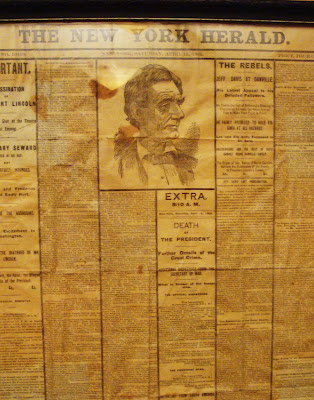Every once in a while a trip to Madison or other parts west will see me travel on Highway 60 through the little city of Columbus, Wisconsin. My eyes are usually focused straight ahead and my mind is leaping ahead to my destination, but every single time I drive through there my head still snaps briefly to the south side of the street as I pass the Farmers & Merchants Union Bank on the main drag. The square, red brick building, extravagantly decorated with green terracotta lions and eagles and glorious gold lettering, stands out amid the surrounding buildings like a peacock in a barnyard. It took several trips past, even at the lightning speed of twenty five miles per hour, to absorb the fact that the building was designed by legendary Chicago architect Louis H. Sullivan, who was mentor to Frank Lloyd Wright.
And that's when I knew it was just a matter of time before I finally stopped in with my camera. The bank itself was founded in September of 1861, and so it just finished celebrating its 150th anniversary. Sullivan was brought in to create a new building for the bank, to keep pace with the area's growth in the early 1900s. While Sullivan's name is more commonly associated with the development of the modern skyscraper and the phrase "form follows function," toward the end of his career he also took on the building of eight little banks throughout the Midwest, known as his collection of "jewel boxes." There were three built in Iowa, two in Ohio and one each in Indiana, Minnesota, and Wisconsin. The Farmers & Merchants Union Bank, being the only "jewel box" in Wisconsin, draws several thousand visitors a year just because of the Sullivan provenance.
The original building is still fully functional, with tellers conducting business in the radiant light of the stained glass gallery of windows above them. More commerce hums in the more recent additions to the building, which was designated a National Historic Landmark in 1983. I had the feeling of stepping into a time machine, not only to the start of the twentieth century, but even before. The bank has a good sampling of its history on display, both in the second floor gallery and in a conference room on the lower floor. I looked at hand-written ledgers written in the mid-1800s with impossibly beautiful script, a framed front page from the New York Herald announcing the assassination of President Lincoln, and an adding machine with a beautiful ornamental bas relief decorating the side. Form following function, my ass! This was beauty for its own sake. And without further ado...I give you a window into the Farmers & Merchants Union Bank in Columbus, Wisconsin!
























1 comment:
Nobody writes it like you do Mary!
Post a Comment